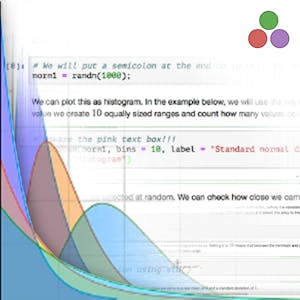This course serves as an introduction to Julia, a powerful programming language tailored for scientific computing. Through a blend of video lectures, on-screen demonstrations, quizzes, and peer-reviewed projects, you will gain practical experience in using Julia for scientific purposes.
Key topics covered include programming environments, arithmetical and logical expressions, user-defined functions, working with data, creating plots using the Plots package, modeling disease dynamics, structuring data and functions, and using statistical methods in Julia.
Certificate Available ✔
Get Started / More Info
This course consists of four modules that cover topics such as programming environments, working with data, using notebooks, and structuring data and functions in Julia. You will gain a comprehensive understanding of Julia's applications in scientific computing.
Module 1 provides an introduction to Julia scientific programming, focusing on the language's unique features and programming environments. You will learn about arithmetical and logical expressions, user-defined functions, and using Jupyter notebooks with Julia. The module concludes with a graded quiz and an assessment of the course's suitability.
Module 2 delves into working with data in Julia, using the example of the Ebola epidemic of 2014. You will learn to load data, create .csv files from data tables, use for loops and date-time formats, and create simple plots using the Plots package. The module also includes a peer-graded assignment and a graded quiz.
Module 3 explores using notebooks as Julia programs, focusing on SIR models of disease dynamics and fitting data to models. You will practice fitting a circle to data and gain experience in creating simple models, plotting data, and fitting curves.
Module 4 focuses on structuring data and functions in Julia, covering topics such as descriptive statistics, creating dataframes, visualizing data, and working with distributions and DataFrames. The module concludes with a graded quiz and an ungraded lab for a peer review assignment.
Data Literacy is a specialization by Johns Hopkins University, equipping professionals with essential statistical skills for interpreting and critically evaluating...
Learn to design and create databases and tables using MYSQL Workbench. Gain essential skills in creating, modifying, and querying databases in under 2 hours.
Data Visualization in Power BI: Create Your First Dashboard
Simulation of KANBAN Production Control Using R Simmer provides a hands-on understanding of discrete event simulation of Kanban control and data interpretation using...